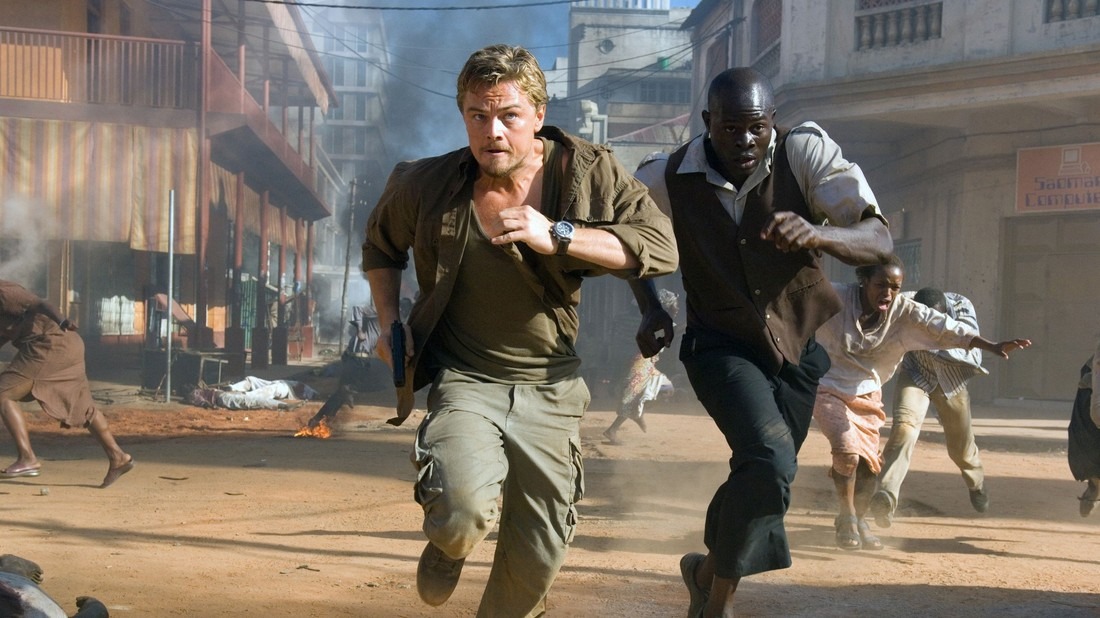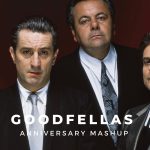“Blood Diamond” (2006)

Edward Zwick’s “Blood Diamond” (2006) is a gripping and thought-provoking film that sheds light on the brutal realities of the diamond trade in war-torn Sierra Leone. Set against the backdrop of civil war and chaos in the 1990s, the movie explores themes of greed, redemption, and the quest for justice through the intertwined lives of its characters.
The story follows Solomon Vandy, brilliantly portrayed by Djimon Hounsou, a fisherman who is forcibly separated from his family and enslaved by rebels seeking to control diamond-rich territories. During his captivity, Solomon discovers a rare pink diamond and hides it, hoping it will secure the freedom of his family. His path crosses with Danny Archer, played by Leonardo DiCaprio, a cynical diamond smuggler who sees the diamond as his ticket to a better life.

Central to the film’s narrative is the ethical dilemma surrounding conflict diamonds, also known as blood diamonds, which are mined in war zones and sold to finance insurgencies and fuel conflicts. “Blood Diamond” exposes the human cost of these precious stones, depicting the exploitation of workers, child soldiers, and the devastating impact on communities caught in the crossfire of civil war.
Visually striking and emotionally resonant, “Blood Diamond” captures the stark beauty of Sierra Leone’s landscapes juxtaposed with the brutality of its civil war. The cinematography immerses viewers in the harsh realities faced by its characters, from the lush jungles where diamond mines are hidden to the war-torn streets where survival is a daily struggle.
At the heart of the film are the performances that breathe life into its characters. Djimon Hounsou delivers a powerful portrayal of Solomon Vandy, imbuing the character with resilience, dignity, and a father’s unwavering determination to reunite his family. Leonardo DiCaprio’s performance as Danny Archer is equally compelling, capturing the complexity of a man torn between greed and redemption, haunted by his own past and searching for a chance at salvation.

Thematically, “Blood Diamond” explores the moral complexities of the global diamond industry and the ethical responsibilities of consumers. The film challenges viewers to confront uncomfortable truths about the origins of luxury goods and the human rights abuses that often accompany their extraction and trade. Through Solomon and Archer’s journey, the film underscores the importance of individual choices in addressing systemic injustices and advocating for change.
Beyond its social commentary, “Blood Diamond” is a story of redemption and the enduring power of hope. As Solomon and Archer navigate a perilous journey to retrieve the diamond and protect Solomon’s family, they forge an unlikely alliance rooted in mutual survival and shared humanity. Their quest becomes a metaphor for the resilience of the human spirit amidst adversity and the possibility of redemption through selfless acts of courage.

Edward Zwick’s direction infuses “Blood Diamond” with urgency and emotional depth, navigating seamlessly between high-stakes action sequences and intimate moments of human connection. The film’s pacing builds tension and suspense, culminating in a climactic finale that challenges its characters—and the audience—to confront the consequences of their choices.
In conclusion, “Blood Diamond” (2006) is more than a tale of adventure and intrigue—it is a powerful indictment of exploitation and a call to action for ethical accountability. Through its compelling storytelling, nuanced performances, and thematic relevance, the film invites viewers to reconsider the true cost of luxury and the transformative potential of compassion in the face of injustice.








